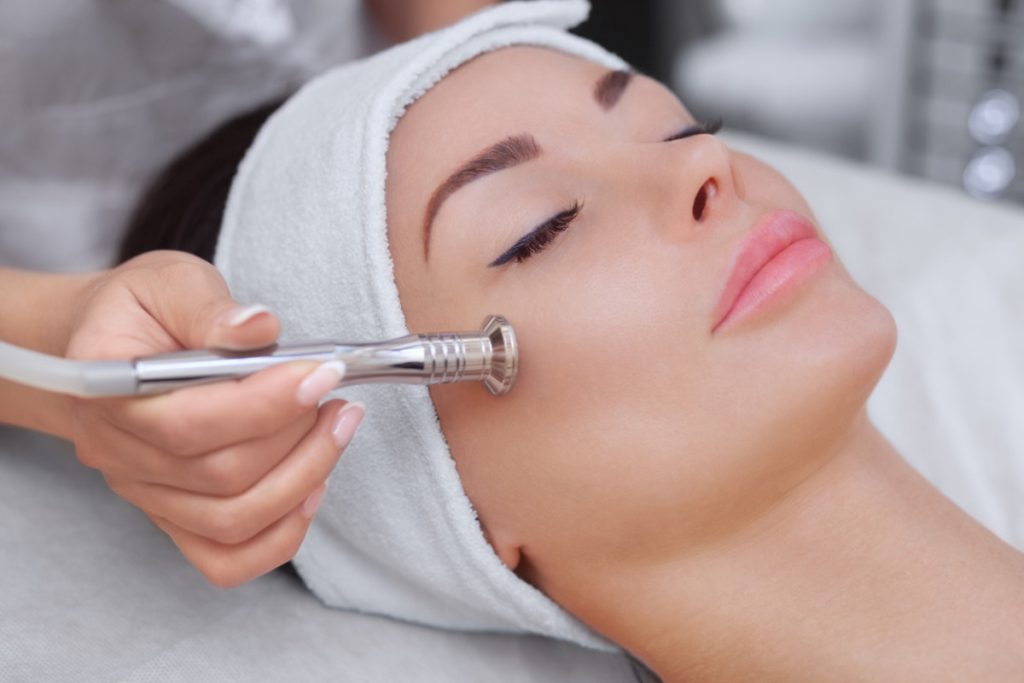Key Takeaways
-
Liposuction is not a cure. To maintain results, you need a healthy lifestyle, normal nutrition, and exercise.
-
Fat cells that are eliminated during liposuction cannot come back, but the fat cells you do still have can stretch with weight gain, particularly in untreated zones.
-
Tailored maintenance plans such as regular hydration, stress control and sleep hygiene are key to maintaining long term results.
-
Routine check-ins with medical experts and exploring adjunct therapies can bolster and optimize your outcome.
-
Life changes like aging, hormones, and major events can affect your maintenance regimen, so adaptability is key.
-
By prioritizing your health and being positive, you can stay motivated and keep a healthy body image for the long term.
Liposuction maintenance long term = lifestyle adjustments to maintain results post-procedure. People who have liposuction want to maintain their new body contours and steer clear of weight gain in targeted regions. Consistent exercise, healthy eating and moderate lifestyle habits prevent fat from returning. Others opt to check-in with their doctor or a registered dietitian for additional assistance. Skin care and hydration can be a factor in maintaining firm skin. Research reveals that healthy habits beat shortcut fixes for long-term results. Long-term maintenance is about consistent decisions, not immediate actions. The following portion offers straightforward methods to maintain momentum and address common concerns post-liposuction.
The Permanence Myth
Liposuction tends to be marketed as a permanent solution for body fat, but that’s not exactly the case. These results depend on what you do post-surgery—how you eat, move and take care of yourself. They think the fat is out of their life forever, but it’s not that simple.
Fat Cell Reality
Liposuction removes a portion of your fat cells, but not all of them. The cells remaining can still expand if you put on weight post-op. So your shape can still morph, post-procedure.
Your body can transfer fat to untreated areas. Like, if the thighs were treated, but you put on weight, fat could pop up more in your arms or back. Genes, too. Others will find new fat appear in places they never anticipated.
Another thing—fat can still creep in elsewhere. That’s the reason you need to keep an eye on your entire body, not just where the treatments were given. There’s no way to choose where fat will go if you gain weight.
Weight Gain Paradox
If you gain weight following liposuction, it can rebound fat, only not necessarily in the same location. The body discovers new places to deposit fat — resulting in uneven contours. How you live your life—what you eat, how much you move—matters a great deal for maintaining results.
|
Factor |
Impact on Weight Gain |
Metabolic Changes |
|---|---|---|
|
Diet |
High calorie intake |
May slow metabolism |
|
Physical Activity |
Low activity |
Less energy burned |
|
Hormonal Changes |
Increased fat gain |
Alters where fat stores |
|
Aging |
Slower metabolism |
More fat retention |
Maintaining a stable weight is crucial to maintaining great-looking liposuction results for years.
Your Body’s Blueprint
Each individual body will respond differently to liposuction. It all makes a difference in what occurs next, age, genetics and natural body shape. We all have some fat ‘somewhere’ no matter how hard we try. Others might experience more even outcomes.
Setting real goals counts. Liposuction can alter contours, but it can’t change your body’s blueprint. It’s healthier to view liposuction as one step in a larger strategy—nourishing yourself properly, exercising regularly, and discovering what your body needs to thrive.
Your Maintenance Blueprint
Long-term liposuction maintenance requires more than just a onetime lifestyle change. It requires a defined strategy that combines nutrition, exercise, water intake, and self-love. These measures maintain your outcomes, fend off fat gain, and fuel your health. Consistency really is what matters most since the results will swing if you fall back into here-above-there habits. By defining small, real goals, you make your progress trackable and your motivation up. This blueprint is for anyone seeking a dependable route to permanent outcomes, regardless of your location or lifestyle.
1. Nutrition Strategy
Stable results are all about a balanced diet. Meals should be centered around lean proteins like fish or beans, healthy fats from nuts or avocados and whole grains like brown rice. Processed foods, refined sugars and added salt can lead to weight gain and bloating. Attempt easy to prepare meals with fresh nutrient rich ingredients–salads consisting of a variety of greens, grilled chicken and a side of quinoa.
By consuming smaller, sensible portions at regular intervals you can prevent the energy roller coaster that comes from erratic eating. Employ your hand as a reference, say a palm full of protein, a fist full of vegetables and a thumb full of fat. This keeps fat away for good, because fat can come back.
2. Movement Plan
Consistent movement keeps the metabolism humming and your silhouette shaped. Cardio workouts like brisk walking, swimming, or cycling help burn calories and promote a healthy heart. Two or three days a week, supplement with strength training—bodyweight squats, push-ups, or resistance bands build muscle and help sculpt your results.
Flexibility is equally important. Yoga or pilates for core strength and balance. Schedule a weekly routine that combines these types of activities, and adhere to it. That way you escape tedium and remain sustainable, which is essential for the long haul.
Post-meal strolls, morning stretches or even dancing around the house all integrate well in busy lives.
3. Hydration Habits
Hydrate with 2 liters of water minimum per day to aid your metabolism and skin bounce back post-liposuction. Proper hydration minimizes swelling and preserves texture. Restrict dehydrating beverages, such as alcohol or excessive caffeine.
Fruits like watermelon or oranges provide additional fluids. Measuring Your Water Intake – A water bottle with measurements will allow you to track your intake and work towards your daily goal.
4. Stress Management
Stress unearths unhealthy eating and sluggish development. Some short deep breathing or meditation breaks each day will reduce stress. Activities such as reading or gardening allow you to unwind.
It’s great to have a loyal companion – friend or family member – to chat with. A relaxed mind sustains a vigorous body.
A tranquil corner in the office transforms your workdays.
5. Sleep Quality
Strive for 7–9 hours of sleep. Lack of sleep, for example, can lead to weight gain and delayed healing. Establish a pre-sleep ritual, such as reading or a warm shower.
Screen-free at least 30 minutes before bed enhances sleep.
Professional Partnerships
Professional partnerships are the key to long-term liposuction maintenance. They establish goals, maintain momentum and offer specialized guidance at every step of your quest.
Follow-Up Care
Routine visits to your plastic surgeon are a must. These appointments aren’t just about screening for issues—they monitor your body’s fluctuations and allow you to inquire about any new or unexpected symptoms. Your surgeon can detect minor variations early, provide you with advice on continued care, and discuss any potential revision necessity. Their expertise helps detect concerns such as uneven fat distribution or alterations in skin texture early, before they become bigger problems.
Complementary Treatments
While liposuction removes fat, some individuals require additional assistance post-procedure, particularly if the skin fails to retract as anticipated. Treatments such as radiofrequency or ultrasound are other options to help smooth and tighten skin. Non-invasive techniques such as lymphatic drainage massage can reduce recovery time and increase comfort post-operatively. It’s important to consult with your surgeon about what fits your goals. Not every treatment is effective for everyone, and a specialized plan is optimal for enduring outcomes.
Expert Guidance
A trusted plastic surgeon delivers more than expertise. They provide diet, exercise and lifestyle recommendations that maintain your new form. Continued education is their job and they regularly provide insight on new body contouring techniques or safe, tried and true technologies. Open discussions on new methods or issues—such as weight gain or stubborn fat—ensure you receive the latest advice. Their perspectives can keep you from errors and seize new opportunities.
Key Elements for Success
Good communication restores trust and clears up any misunderstanding. Professional partnerships thrive on common objectives and mutual respect. By stretching your network you expose yourself to new ideas and resources. Maintain clear boundaries and expectations to prevent confusion.
Navigating Life’s Changes
Life doesn’t tend to hold still. As bodies and routines change, so do the measures required to maintain liposuction results. Staying healthy long term means adapting to the usual shifts—age, hormones, life events—and making consistent small decisions each day.
The Aging Process
Aging changes the way skin lays and fat deposits, so bodies can lose their previous form as time goes on. Skin can lose its spring and you’ll find new pockets of fat despite habits remaining consistent.
Easy natural daily routine modifications that combat these transitions. Skincare with sunscreen and moisturizer keeps skin strong and strength training can slow muscle loss. Most supplement with some anti-aging treatments — retinoids or non-invasive skin tightening — to amplify results. Being aware about how aging shifts fat distribution aids in establishing reasonable objectives. Occasionally, a bit of additional TLC or a fresh strategy is required.
Hormonal Shifts
Hormones have a lot to do with weight and body shape. Puberty, pregnancy, menopause or health problems can all change the way your body holds fat.
Adjusting your nutrition and fitness is critical. Picking a well-balanced diet with plenty of lean protein, whole grains, fruits, and vegetables will sustain your health for the long run. Targeting 150 minutes of moderate exercise per week helps stabilize weight and mood fluctuations. Others will experience more changes during menopause, so monitoring your progress and consulting a doctor about hormone management are handy.
Major Life Events
Major life changes—like relocation, work transitions, or having kids—can disrupt wholesome habits. Stress, new schedules, or lost sleep complicate maintaining healthy habits.
It helps to have a plan. Even just a few minutes a day of mindfulness meditation can help tamp down stress and foster clear thinking. Keeping yourself hydrated with a minimum of 8 glasses and sleeping for 7-9 hours every night provided the foundation for recovery and equanimity. When life changes, check back in with your goals and modify your maintenance scheme as necessary.
The Mental Shift
Long-term maintenance post-liposuction isn’t just a matter of your scale numbers or your silhouette. It’s about how they see themselves and feel each day. The mental shift this process can create in your life is what plays such a big role in remaining healthy and happy year after year. Most discover that a robust mindset, combined with self-awareness, maintains motivation consistent and cultivates a confidence that endures.
Beyond The Mirror
Staying healthy is about more than just admiring your reflection. It’s about feeling powerful and energized and capable of doing the things you love. Being able to walk further without tiring or hold your own with friends in a fitness session lifts your spirits way more than squeezing into size 6. Most observe new strength or flexibility within weeks after surgery.
Just as crucial is mental well-being. Those who work on the inside–joining support groups, engaging in mindfulness, or seeking therapy–tend to accept their bodies more easily. Journaling, yoga, or daily walks are self-love-building activities. With roughly 70% of individuals stating they felt more confident when backed by positive support, constructing a healthy environment is important.
Body Image Evolution
Body image shifts with the passage of time. What you sense about your body today could change as you develop, and that’s okay. A few, around 30%, feel ambivalent immediately post-surgery. It helps to talk to others who’ve been through the same or join a community that celebrates body positivity.
Society’s beauty standards are able to influence your perception of yourself. Recognizing this influence is one step toward freeing yourself from bad comparison. Own your story and share it with the world, and you’ll find more acceptance and less stress.
Sustainable Motivation
-
Checklist for Motivation: * Have straightforward objectives (such as walking 5,000 steps a day).
-
Monitor improvement via journal or app.
-
Celebrate each milestone, even the small ones.
-
Touch base with yourself every week about how you’re feeling.
-
Modify objectives, if necessary, and remain open to shifting.
-
Keeping your goals small and real keeps motivation high. Celebrate small victories, like choosing healthy foods for a week. Most people are feeling better within weeks, but continued check-ins can keep progress on an even track.
Future-Proofing Results
Long-term liposuction maintenance depends on more than just the initial procedure. Weight and lifestyle changes can still affect shape — even treated areas aren’t completely safe. By staying on top of new solutions, using personalized care and making smart daily decisions, you can future-proof results.
Emerging Technology
New technologies continue to disrupt how people maintain body contouring results. CoolSculpting, laser-assisted lipolysis, radiofrequency skin tightening — it’s just a handful of options that now play nicely with liposuction. These non-invasive or minimally invasive treatments can assist tighten skin and go even further with fat reduction — in treated and untreated areas. For instance, ultrasound therapies can smooth trouble areas, while cryolipolysis hits resistant fat with zero downtime. As these technologies get better, so do their results — making it easier to future-proof liposuction outcomes. Patients should talk through these options with their plastic surgeon to evaluate their benefits and determine which may best align with their goals.
|
Advancement |
Potential Benefit |
|---|---|
|
CoolSculpting |
Non-invasive fat reduction |
|
Laser-assisted lipolysis |
Improved skin tightening |
|
Radiofrequency devices |
Enhanced contour and skin texture |
|
Ultrasound therapies |
Targeted fat disruption |
|
Cryolipolysis |
Spot fat removal in untreated areas |
Personalized Medicine
Personalized health tips can help for liposuction upkeep. A strategy designed for your body can tackle weight, metabolism and future risk. Genetic testing can show you how your body stores fat or reacts to certain foods, so you can make smarter decisions about diet and exercise. Healthcare teams now leverage wearable and health app data to track progress and adjust plans when necessary. By collaborating with an expert, you can establish attainable goals for nutrition, physical activity, and even sleep — taking into account how they enable consistent, long-term results.
Lifelong Learning
Keep current on health, nutrition, and fitness — crucial for anyone post-liposuction. Workshops or health seminars provide up-to-date facts on body maintenance, and online forums can assist you in finding what works for others. Continue question-asking/exploration behavior — this mindset simplifies identifying habits or patterns that keep you on track. To learn for life is to experiment with new workouts, new nutrition studies, new community groups for motivation.
Conclusion
Liposuction maintenance long term results require consistent attention. Bodies evolve over time, so no fast solution is eternal. Clever routines such as daily walks, simple meal swaps and regular check-ins with health pros can go a long way. It’s people who know how to change their mindset, monitor mini victories, and pay attention to their health who first experience the true reward. Even little actions, such as trading soda for bottled water, or taking a stair instead of a lift, accumulate. Some days growth feels slow, but every little decision still adds up. To maintain your top form, remain candid with yourself and transparent with your care team. Got objectives or new inquiries? Contact an expert that understands you and your goals!
Frequently Asked Questions
Is liposuction permanent?
Liposuction eliminates fat cells for good from treated areas. Existing fat cells can still grow if you gain weight. Liposuction maintenance long term
How can I maintain liposuction results long term?
Embrace a sensible diet and exercise program. Smart habits keep new fat at bay and allow you to maintain your results.
Does liposuction prevent future weight gain?
Liposuction will not prevent future weight gain. It extracts the fat cells you have, but if you have a bad lifestyle the weight can come back.
Should I see a doctor after liposuction?
Yes, doctor follow-ups keep tabs on your advancement and get any issues out in the open. Expertise promotes long term results.
Can life changes affect my liposuction results?
Yes, pregnancy, aging or significant lifestyle changes can impact your outcome. Being proactive enables you to be flexible and sustain your objectives.
Does mental health play a role in maintenance?
A good attitude sustains wellness decisions and body pride. Mental well-being is the secret to liposuction maintenance!
What if I gain weight after liposuction?
Weight gain following liposuction can impact both liposuctioned and non-liposuctioned regions. Being consistent about healthy habits reduces the chances of fat returning.








